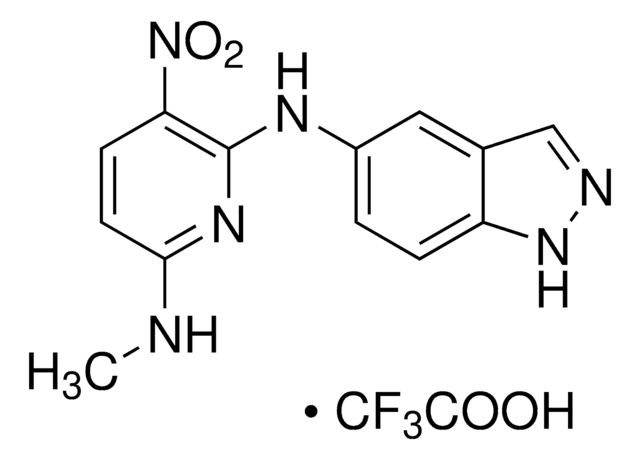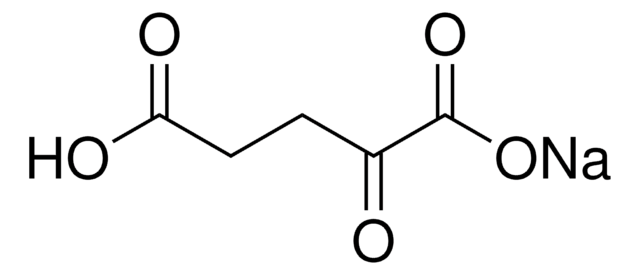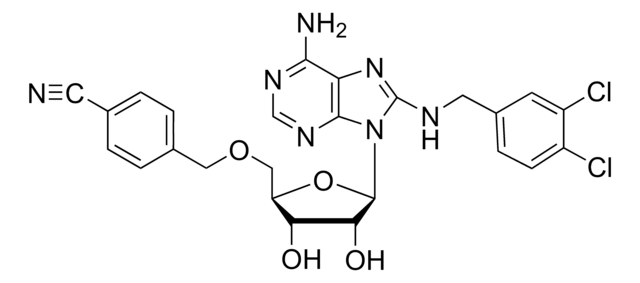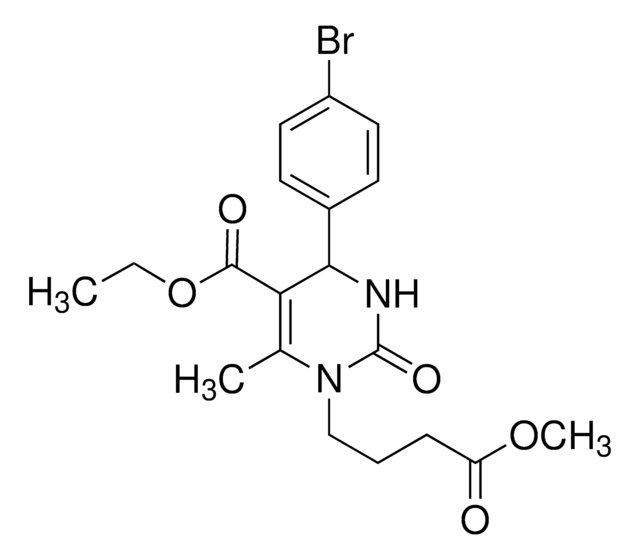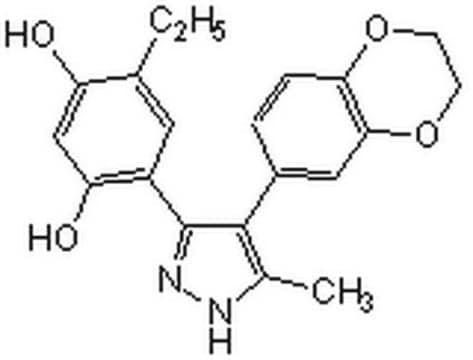385570
Heat Shock Factor 1 Inhibitor, KRIBB11
The Heat Shock Factor 1 Inhibitor, KRIBB11 controls the biological activity of Heat Shock Factor 1.
Sinónimos:
Heat Shock Factor 1 Inhibitor, KRIBB11, Hsp70 Induction Inhibitor II, N²-(1H-Indazol-5-yl)-N⁶-methyl-3-nitropyridine-2,6-diamine, HSF1 Inhibitor, KRIBB11, Heat Shock Protein Inhibitor III, p-TEFb hsp70 Promoter Recruitment Inhibitor
About This Item
Productos recomendados
Nivel de calidad
Análisis
≥98% (HPLC)
formulario
solid
fabricante / nombre comercial
Calbiochem®
condiciones de almacenamiento
OK to freeze
protect from light
color
orange-yellow
solubilidad
DMSO: 50 mg/mL, brown
Condiciones de envío
ambient
temp. de almacenamiento
−20°C
cadena SMILES
CNC(C=C1)=NC(NC2=CC3=C(NN=C3)C=C2)=C1[N+]([O-])=O
Descripción general
Envase
Advertencia
Reconstitución
Otras notas
Información legal
Código de clase de almacenamiento
11 - Combustible Solids
Clase de riesgo para el agua (WGK)
WGK 3
Punto de inflamabilidad (°F)
Not applicable
Punto de inflamabilidad (°C)
Not applicable
Certificados de análisis (COA)
Busque Certificados de análisis (COA) introduciendo el número de lote del producto. Los números de lote se encuentran en la etiqueta del producto después de las palabras «Lot» o «Batch»
¿Ya tiene este producto?
Encuentre la documentación para los productos que ha comprado recientemente en la Biblioteca de documentos.
Nuestro equipo de científicos tiene experiencia en todas las áreas de investigación: Ciencias de la vida, Ciencia de los materiales, Síntesis química, Cromatografía, Analítica y muchas otras.
Póngase en contacto con el Servicio técnico